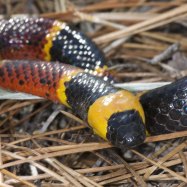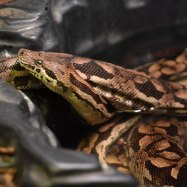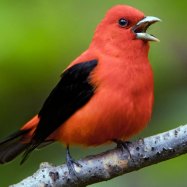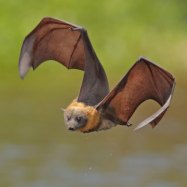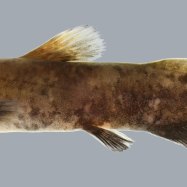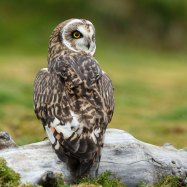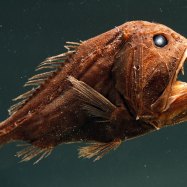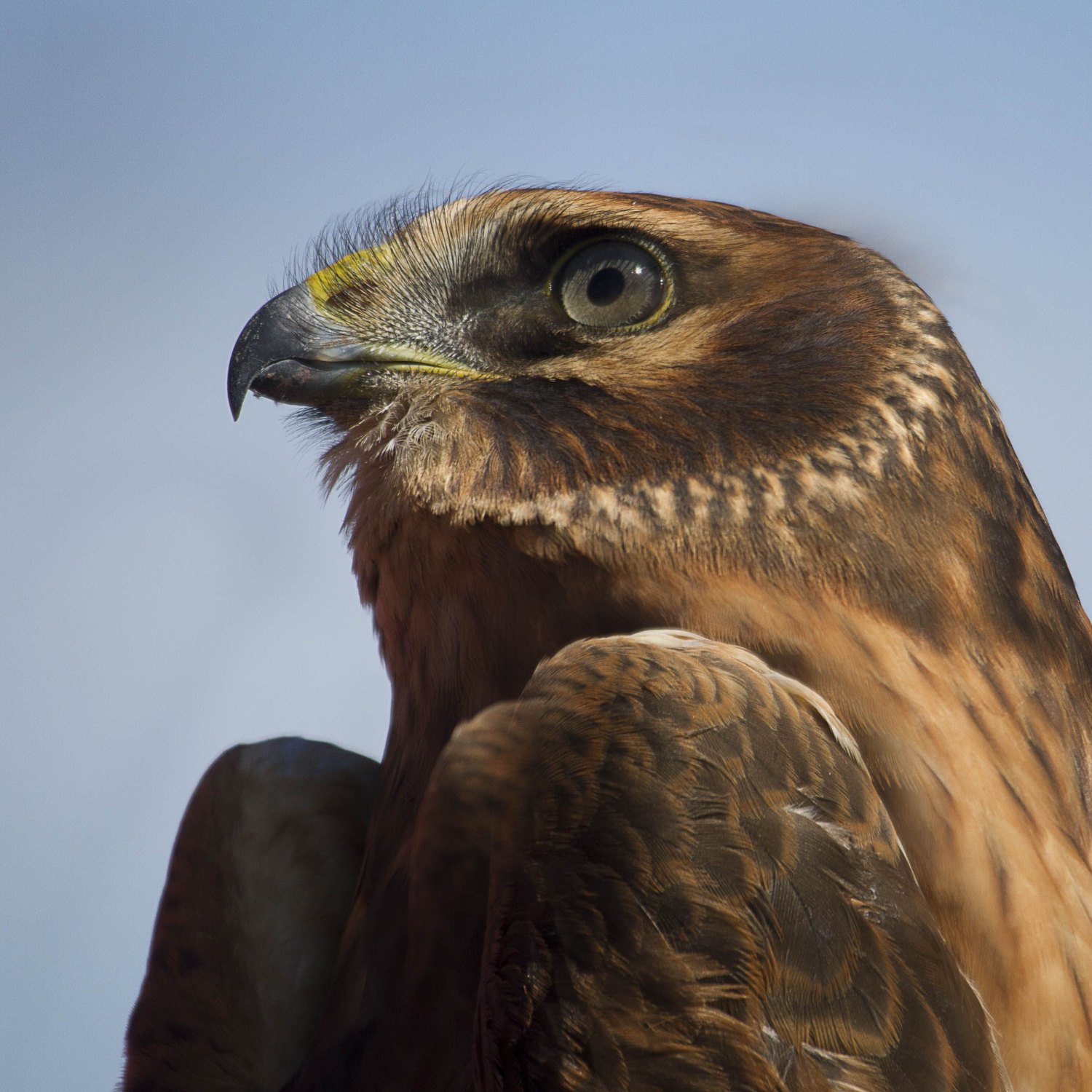
Northern Harrier
45-55 cm (18-22 inches)
The Northern Harrier, also known as the Marsh Hawk, is a stunning bird of prey found in the northern regions of North America. With a slender and long-winged body shape, it can reach a length of 45-55 cm (18-22 inches). This bird belongs to the Accipitridae family and is known for its distinctive white rump. Keep an eye out for this majestic creature in the wild! #NorthernHarrier #MarshHawk #BirdsOfPrey
Animal Details Summary:
Common Name: Northern Harrier
Kingdom: Animalia
Habitat: Marshes, grasslands, meadows, open fields
A Majestic Hunter: The Northern Harrier
The beauty and grace of birds of prey have always captivated human minds, and one such magnificent bird is the Northern Harrier. This bird belongs to the kingdom Animalia, phylum Chordata, and class Aves, and is scientifically known as Circus hudsonius. With its striking appearance and impressive hunting skills, the Northern Harrier is truly a remarkable creature.The Northern Harrier, also commonly known as the Marsh Hawk, is a medium-sized bird of prey that belongs to the order Accipitriformes and the family Accipitridae Northern Harrier. They can be found in various habitats such as marshes, grasslands, meadows, and open fields, and are found in different parts of North America, Eurasia, and Africa. These birds are native to the United States and can primarily be found in the northern regions of North America.
One of the most distinctive features of the Northern Harrier is its coloration. These birds have different shades of grey, brown, and white feathers, which make them stand out in their natural surroundings. The male and female Northern Harriers have different color patterns, with the males having a lighter coloration and the females having a darker one. These colors play a significant role in their survival as they help them to camouflage and remain undetected while hunting.
The body shape of the Northern Harrier is also unique and perfectly suited for their hunting style. They have a long and slender body with long, narrow wings, which give them a distinct appearance. The long wingspan of these birds, measuring up to 45-55 cm (18-22 inches), allows them to drift closely to the ground while hunting for prey Night Adder. This low flight pattern also helps them to use their excellent eyesight to scan their surroundings and spot their prey.
As carnivorous birds, Northern Harriers feed on a variety of prey that includes small mammals like voles, mice, and shrews, as well as birds like quails and sparrows. They have sharp talons and a hooked beak, which they use to capture and kill their prey. These birds are also known for their unique hunting technique called "skydancing". During this display, the male Northern Harrier performs an aerial acrobatic routine to attract potential mates. The routine involves the male bird flying up high, then suddenly diving downwards with its wings spread out, and then climbing back up again. This display is a true spectacle to behold and is a signature move of the Northern Harrier.
Despite their excellent hunting skills, the Northern Harriers face various threats that endanger their existence. Human activities such as habitat destruction and pesticide use have significantly impacted their population. Loss of habitat, especially in the prairies and marshes, has led to a decline in their numbers. In addition, the use of pesticides by humans has resulted in the contamination of their prey, making it toxic for the birds to consume. These threats have caused the Northern Harrier to be listed as a species of concern in some regions and are a reminder of the importance of conservation efforts for these magnificent creatures.
The Northern Harrier is also known for its migratory patterns and has a distinct breeding season. In North America, these birds begin their breeding season in April and May, with the females nesting on the ground. The female Northern Harrier also takes on the responsibility of incubating the eggs while the male provides food. The female lays an average of four to six eggs, and the incubation period lasts for about 32-35 days. The chicks then fledge and start hunting with their parents after about 30 days.
Despite their hunting prowess, the Northern Harrier is not a ferocious predator like other birds of prey. They are known to be docile and quiet birds, only vocalizing with a distinct "kip kip" sound when in flight. Their gentle nature has earned them the nickname "ghost birds" as they seem to appear and disappear silently like ghosts.
The Northern Harrier's global population is currently stable and is estimated to be around 500,000 individuals. In North America, their population is considered to be of least concern, but in some regions, their numbers have been in decline. Therefore, efforts are being made to conserve their habitat and provide a safe environment for these birds to thrive.
In conclusion, the Northern Harrier is a majestic hunter that has a significant impact on its ecosystem. As a top predator, it helps to control the population of its prey species, thus maintaining a balanced ecosystem. Its unique appearance, impressive hunting skills, and peaceful nature make it a true marvel of nature. As humans, it is our responsibility to ensure the conservation of these magnificent creatures and protect them for future generations to admire and appreciate. Let us celebrate the beauty and wonder of the Northern Harrier and take steps to ensure their survival in the wild.

Northern Harrier
Animal Details Northern Harrier - Scientific Name: Circus hudsonius
- Category: Animals N
- Scientific Name: Circus hudsonius
- Common Name: Northern Harrier
- Kingdom: Animalia
- Phylum: Chordata
- Class: Aves
- Order: Accipitriformes
- Family: Accipitridae
- Habitat: Marshes, grasslands, meadows, open fields
- Feeding Method: Carnivore
- Geographical Distribution: North America, Eurasia, and Africa
- Country of Origin: United States
- Location: Northern regions of North America
- Animal Coloration: Gray, brown, and white
- Body Shape: Slender and long-winged
- Length: 45-55 cm (18-22 inches)
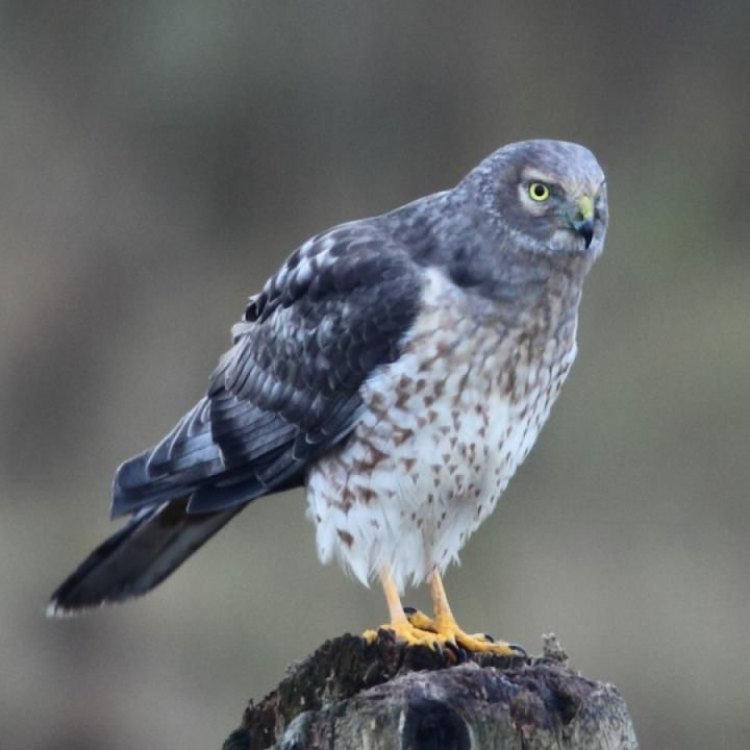
Northern Harrier
- Adult Size: Medium
- Average Lifespan: 5-8 years
- Reproduction: Sexual
- Reproductive Behavior: Monogamous
- Sound or Call: High-pitched whistle
- Migration Pattern: Migratory
- Social Groups: Solitary
- Behavior: Efficient hunter and skilled aerial acrobat
- Threats: Habitat loss, pesticides, collisions with vehicles
- Conservation Status: Least Concern
- Impact on Ecosystem: Controls rodent populations
- Human Use: Birdwatching, falconry
- Distinctive Features: Facial disk and owl-like appearance
- Interesting Facts: Male performs aerial courtship displays
- Predator: Larger birds of prey
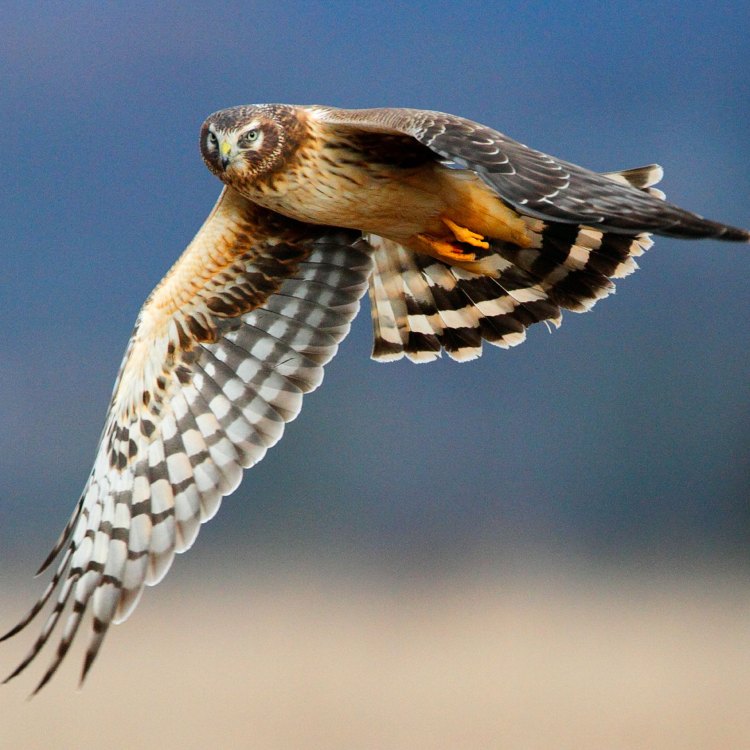
Circus hudsonius
The Majestic Northern Harrier: A Masterful Predator and Skilled Aerial Acrobat
The Northern Harrier, also known as the Marsh Hawk, is a remarkable bird of prey that can be found in North and South America, Europe, and Asia. This medium-sized raptor is a masterful hunter and one of the most distinctive and unique birds in the world.The average adult size of a Northern Harrier is between 18-20 inches in length, with a wingspan of 40-48 inches, making them slightly smaller than other birds of prey such as eagles and hawks. Despite its size, the Northern Harrier is a powerful and efficient hunter, known for its impressive aerial acrobatics and exceptional hunting skills PeaceOfAnimals.Com.
While their lifespan ranges from 5-8 years in the wild, these birds can live up to 16 years in captivity. This is due to the increased risk of predators and threats in their natural habitat.
Reproductive behavior in Northern Harriers is sexual, meaning that they require both male and female individuals to reproduce. Interestingly, this species exhibits monogamous behavior, meaning that they form a lifetime partnership with one mate. These pairs can often be seen flying together, with the male scouting for prey while the female stays close to the nest to protect their young.
One of the most unique features of the Northern Harrier is their high-pitched whistle, which is commonly used as a means of communication between mates, or to alert others of potential dangers. Additionally, with their migratory pattern, Northern Harriers are known to fly in flocks, making this whistle an essential tool for effective communication.
Unlike other birds of prey, Northern Harriers are solitary birds, meaning they prefer to hunt and live alone. However, during breeding season, they can often be found in pairs or small groups, usually near their nesting site Newt.
Behavior-wise, Northern Harriers are known as efficient hunters and skilled aerial acrobats. They hunt by gliding low to the ground, using their keen eyesight and excellent hearing to locate rodents, insects, and small mammals. These birds have adapted to their environments and can often be seen flying just a few feet above the ground to catch their prey by surprise.
Their incredible aerial maneuvering skills are also showcased during their courtship displays, where the male performs mesmerizing aerial dances to attract a female. These displays involve flying high above the ground, then suddenly plunging down at a high speed, only to pull back up at the last moment. This impressive aerial ballet demonstrates their strength, agility, and hunting prowess, all in the name of love.
Unfortunately, despite their impressive capabilities, Northern Harriers face a variety of threats that endanger their survival. The destruction and loss of their habitats due to urbanization and agriculture have greatly impacted their numbers, as they require open areas with tall grasses for their hunting and nesting. Pesticides used in these environments also pose a significant threat to these birds, as they can end up consuming poisoned prey. Additionally, collisions with vehicles are also a significant cause of mortality, as these birds often hunt near roadsides.
According to the International Union for Conservation of Nature (IUCN), the Northern Harrier is listed as least concern, meaning that while their population numbers are stable, they still face significant threats. Conservation efforts are ongoing to protect their habitats and reduce human impact on these birds.
Apart from their role in the ecosystem, Northern Harriers are also valuable to humans. Birdwatching is a popular activity for enthusiasts, who are drawn to the unique features and behaviors of these birds. Their stunning aerial displays and striking appearances make them a favorite amongst birdwatchers. In the past, they were also used in falconry, which is the art of training birds of prey to hunt for sport.
One of the distinctive features of Northern Harriers is their facial disk, similar to that of an owl's. This disk assists in hearing, helping them locate prey, even in dimly lit areas. This, along with their owl-like appearance, has led to the belief that these birds are related to owls, but they are actually part of the hawk family.
Male Northern Harriers are known to be excellent fathers, taking an active role in raising their young by providing food and protecting the nest. Another interesting fact is that while they are known to be solitary hunters, they have been observed working together in pairs to hunt larger prey or to defend their nest from predators.
Speaking of predators, Northern Harriers are also under threat from other birds of prey, such as larger hawks and eagles. These predatory birds often compete for the same prey, and Northern Harriers have to be swift and agile to escape becoming a meal for their fellow raptors.
The Northern Harrier is a fascinating and stunning bird, with its unique characteristics and behaviors. Whether it's their efficient hunting skills, aerial acrobatics, or monogamous relationships, these birds continue to capture the hearts and minds of bird enthusiasts and nature lovers around the world. It is through conservation efforts and awareness that we can help protect these majestic creatures and ensure they continue to soar in our skies.

A Majestic Hunter: The Northern Harrier
Disclaimer: The content provided is for informational purposes only. We cannot guarantee the accuracy of the information on this page 100%. All information provided here may change without prior notice.

